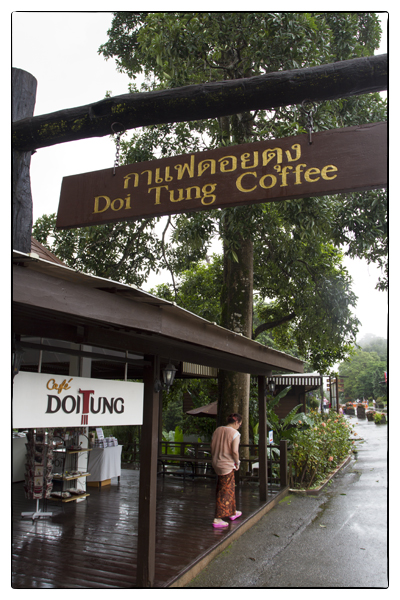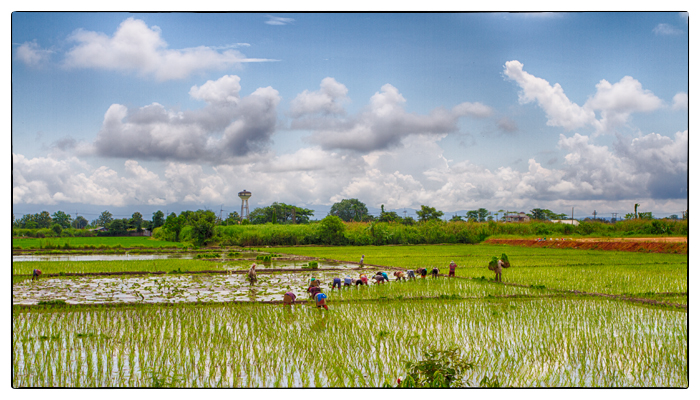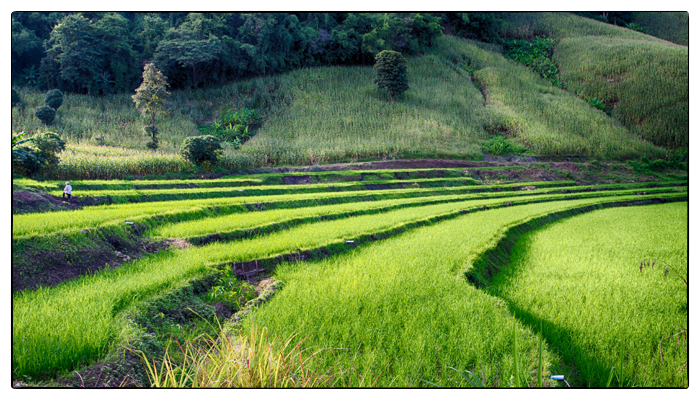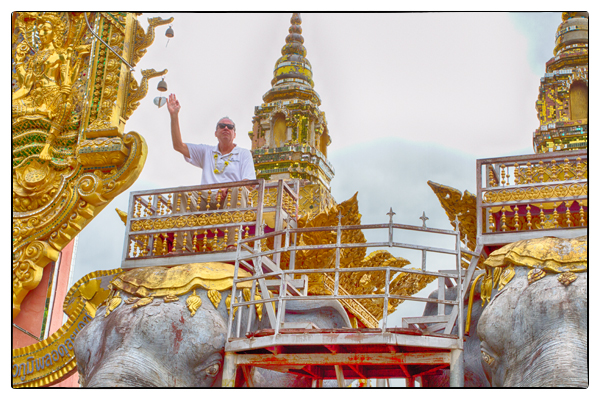
The Princess Mother’s summer retreat in Doi Tung. No photography allowed once you’re inside. Photo by David Lansing.
After days and days of travel the most enthusiastic traveler morphs into an international Willy Loman of sorts who desires nothing so much as an appointment-free afternoon and a long nap in a quiet hotel where beers from the mini-bar can be happily expensed. Sometimes, as you climb a slick hill in a steady rain to go have a look at the summer home of the woman who was the mother of the king of Thailand and died 18 years ago, you have to give yourself a sort of mental slap and say, “Snap out of it, punkie! You’re in Thailand! In the middle of the Golden Triangle! At a royal villa! Go enjoy yourself!”
I’d like to tell you that the Princess Mum’s Royal Villa in Doi Tung was amazing. That I only wish I’d had more time there. That I saw things inside I’d never even imagined existed. But I’d be lying.
If anything the Royal Villa reminded me of the rustic ski lodge at a very third rate ski resort. For a royal villa, it was rather small. And boring. Taking a peak at the “social room” where the Princess Mum relaxed with her family, you couldn’t help but think that it looked exactly like a family room in some mountain-oriented cabin in Montana or Vermont where mom and dad read their summer novels while the kidlets played Parchesi. The furniture looked like what you’d find in any farmhouse in Iowa—simple, threadbare, sun-faded.
One bonus: the Princess Mum had a dental office in the house (evidently she had constant problems with her dentures). But other than that, it could have been any Swiss-chalet-style summer cabin anywhere in the world.
I’d show you interior photos of the place but no pictures were allowed. Not that there’s really anything to take a photo of. Which is maybe why they don’t want people taking shots—it might discourage tourists from visiting.







Recent Comments